
views
Making Chess Fun & Approachable
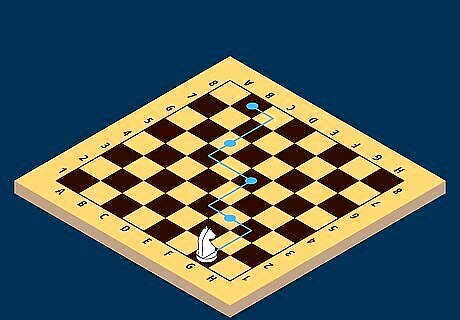
Start small, and ease children into the game gradually. International Chess Master Vitaly Neimer warns against giving kids a whole lot of material all at once. Avoid textbooks and lengthy videos that teach technical stuff. At the start, just introduce them to the board and pieces, and have fun interacting with the game together, even if rules get broken left and right. Introduce new rules casually and organically. For example, if a child has the chance to make a good play with their knight, that's an opportunity to explain how the knight moves.

Make it lighthearted and fun to engage their imagination. Neimer suggests talking about the pieces like they are soldiers in a war and describe the game as a battle to engage a child. Or, create an entire storyline around the battle to increase excitement. You might also use a board themed to their favorite movie or fantasy setting to make it more engrossing. It’s sometimes fun to give different pieces their own unique names, too, so children grow attached to them.
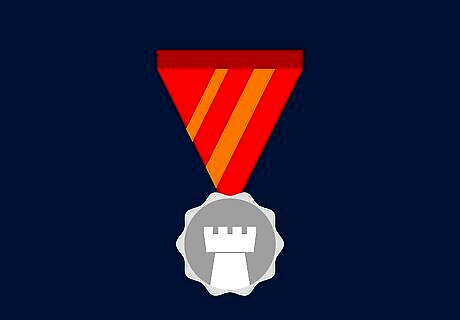
Praise smart moves, and offer lots of encouragement. Chess can be hard, especially for a young kid! That’s why it’s essential to offer plenty of praise at every opportunity. Kids become more enthusiastic and encouraged when they hear that they’ve done something well. You might say, “Wow, that move with your castle was really smart. I didn’t even have to teach you that!” or, “You’ve backed me into a corner here, well done!”
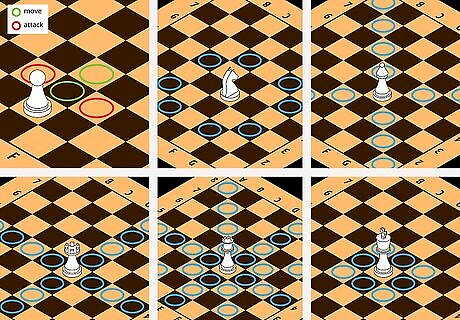
Be patient, and take your time. Your kid won’t be a grandmaster right away, or even anytime soon, and that’s okay. Skill comes with experience, and it’s important that that experience remains fun and engaging so that your child wants to improve, not just feels obligated to. Let them take chess at their own pace, and avoid losing your patience or temper if they play sloppily or learn more slowly than you’d hoped. If your child starts to lose interest, let them walk away, and don’t press the issue. Kids are more resistant to learning things if it feels like a chore or obligation.
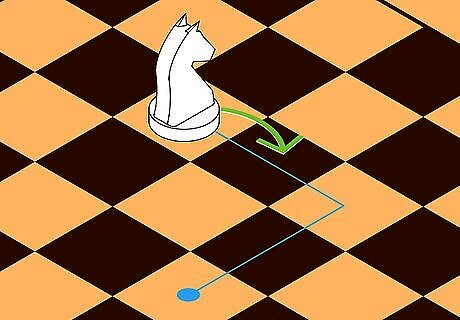
Allow them to make mistakes, and also to win. Children might not pick up chess as easily as they do other games—it can be a bit less intuitive, and they might make clumsy mistakes as they struggle to grasp certain rules. What’s important is that you acknowledge their limitations and adjust your teaching style to match. If they make a mistake, calmly explain the mistake, and offer an alternative. Also, don’t just pummel them every game; let them win every so often to boost their confidence and show them how fun chess is. Once your child has learned the basics, improvement comes from playing and experiencing different scenarios. Emphasize that learning is a lifelong process and they can always improve their game.
Focus on playing often, rather than the quality of the games. Neimer emphasizes that “The more they play online, over the board, with friends, the better.” Actual experience trumps study, so give your child a way to play whenever they want in order to improve. You might even take them to local tournaments or casual park events to steep them in the culture of the game. Skill will come naturally when they’re enthusiastic! Set a schedule or structure for them to give them something to look forward to. Strive to play a game with them each day, or at least a few a week, to offer some in-person bonding time.
Encourage them to study independently, if they want. Once you make chess fun, and something your child looks forward to, then the hard part is done. Kids are naturally curious, and usually will go out of their way to learn about their interests. Provide them with engaging resources that match their skill level, like YouTube channels or strategy and puzzle books, to help them learn independently. For example, Kids Academy has a great YouTube playlist of chess tutorials tailored just for kids.
Encourage them to play with friends, or online. Kids are more likely to stick to something if their friends are doing it, too. Arrange chess playdates, or encourage them to join a chess club. If your child is into technology (and most are these days), take advantage of that and introduce them to sites like chess.com or Lichess, where they can play games against other players of similar skill levels, and also explore teaching resources to learn more in-depth strategy. Some online chess sites allow players to communicate, so remember to always monitor your child’s internet usage.
Introducing a Child to Chess

Explain that each space on the board can hold 1 piece. Introduce them to the board itself, and explain that each player starts on opposite sides of the grid. Pieces each move along the squares of the board, and only 1 piece can occupy a square at a time. A chess board has 8 rows (ranks) and 8 columns (files). Explain that the different-colored squares are just to help players more easily “read” the board—some children mistakenly take the different colors to be associated with different teams. If you’re teaching in a classroom, it may help to number the horizontal squares from 1 to 8, and letter the vertical squares from “a” to “h.” You can then use a coordinate system while you are teaching.
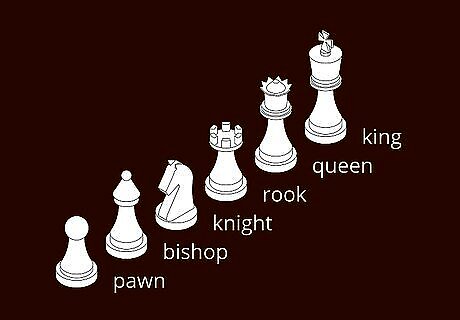
Set up and explain the pieces and how they move. Place the pieces on the board so your child can see the proper position. Explain that there are different kinds of pieces, and each kind moves across the board differently. Neimer recommends coming up with mnemonic devices to help children learn each piece and its rules. For example: Pawns are small, and so they can only move 1 space, but they get excited at the start, and so can move 2 spaces on their first turn. The knight looks like a horse, and his movement pattern looks a bit like the horse’s head. The bishop looks like a bishop’s hat, and moves diagonally because of the diagonal “cut” in his hat. Castles (or rooks) can move as far as they like in any direction (except diagonally), like long castle walls. The king is the most important piece, and can only move 1 square because his crown is so heavy. His crown also resembles his movement ability. The queen is also important, and can move almost anywhere, because she’s the queen, of course!
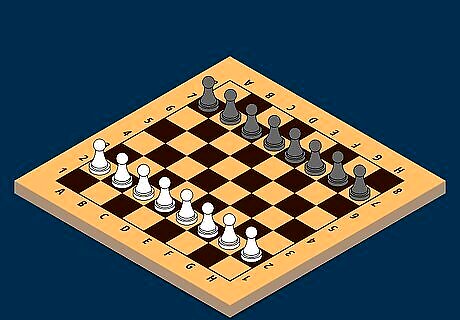
Play a pawns-only game to teach basic movement and taking pieces. Set up the chess board with only pawns. Explain that the goal of this game is to move as many of your pawns to the other side of the board as you can, and take your opponent’s pawns by moving diagonally. Remind them that the white pawn moves first and that pawns can move 2 spaces on a first move. This helps ease the child into the rhythm of the game, while getting familiar with basic mechanics. An alternate goal of the game can be to see who can move a single pawn to the other side first.
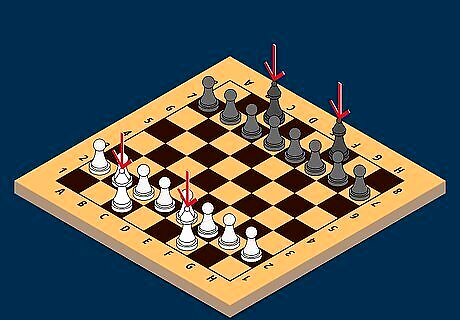
Introduce a new piece each game. Once the child has a good grasp of pawn movement, add the bishops to the game, then castles, knights, and queens. Introduce 1 piece per game, so your child steadily learns their mechanics and how they interact. For now, just play with the aim of taking all of each other’s pieces, or getting a pawn to the other side. You may need to slow your pace, based on your child’s progress. If they seem confused, play 2-3 games with a new piece before adding another.
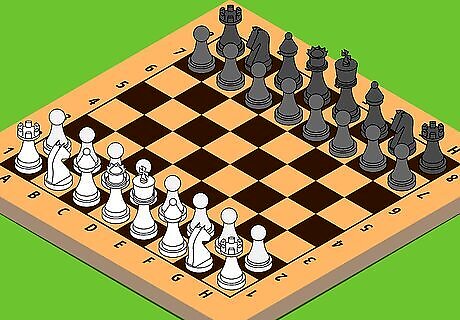
Play a full game with kings, and emphasize their importance. Now it’s time to introduce the kings. Tell your child that the king is the most important piece, and explain that the aim of “real” chess is simply to capture the other player’s king, and that this is how most people play. Now explain the concepts of “check” and “checkmate.” Then, play a full game with the kings and with proper rules. You might say, “Check is when a king is in danger, and so you have to get him out of danger. Checkmate is when the king has nowhere to go, and the other player wins.” Since this dramatically changes the goal of the game, remember to stay patient with your child and continually remind them of the new goal. You might also play a simplified game with just pawns, queens, and kings, to focus more on the mechanics of check and checkmate, without too many other things happening on the board.
Introducing Advanced Mechanics
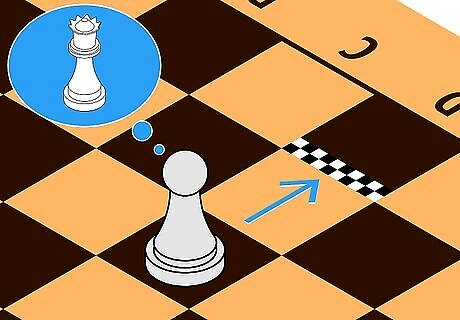
Explain how pawns get promoted. After your child is comfortable with the basic rules, explain that a pawn is promoted when it reaches the other side of the board, and once it does, you can replace it with the piece of your choosing, except for a king. Pawns are most commonly promoted to queens. Explain that, effectively, you may have more than 1 queen on the board, which lends you a powerful advantage. When possible, let the child be the first to “try out” new mechanics—like allowing them to promote a pawn before you—so that they feel empowered and excited.
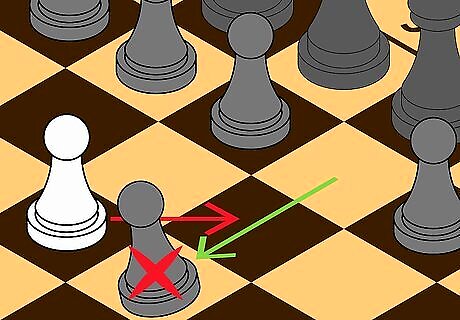
Explain en passant with your pawns. En passant happens when a player moves the pawn 2 spaces on the first movement and the pawn is adjacent (but not diagonal) to the opponent’s pawn. If this happens, the opponent can use their pawn to capture your pawn, breaking from the diagonal capture rule. Your opponent must capture your pawn during the next move. If the pawn is not captured during the next move, your pawn can remain. This is often a tricky and forgotten rule for new players, but a must-know, so it’s best to introduce it fairly early after your child has mastered the basics.
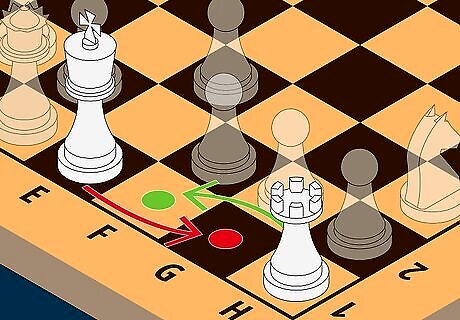
Explain how “castling” works with kings and castles. If there is nothing between the king and the castle and neither of the pieces have been moved yet, then a player may cross or “castle” the 2 pieces: the king moves 2 spaces towards the castle and then the castle jumps to the other side of the king. Remind your child that this can only be done if neither the king nor castle has moved yet, there are no pieces between them, the king can’t be in check, and can’t be done with a promoted pawn.














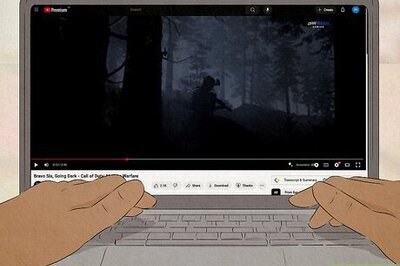


Comments
0 comment